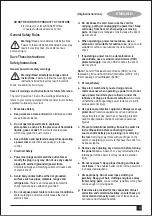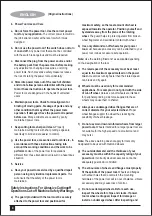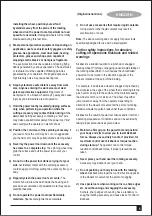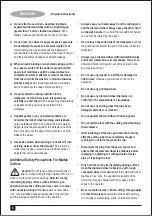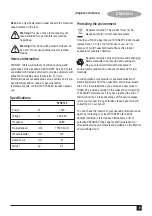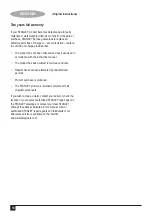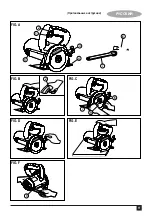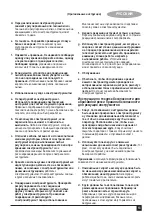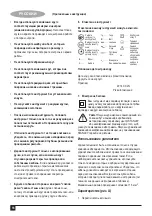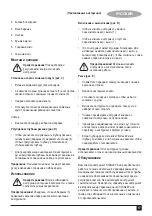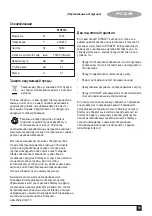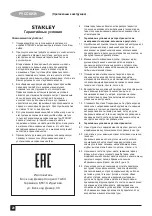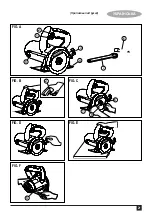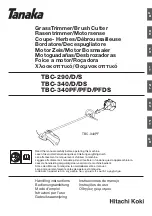
6
ENGLISH
(Original instructions)
e) Do not attach a saw chain, woodcarving blade,
segmented diamond wheel with a peripheral gap
greater than 10 mm or toothed saw blade.
Such
blades create frequent kickback and loss of control.
f) Do not “jam” the wheel or apply excessive pressure.
Do not attempt to make an excessive depth of cut.
Overstressing the wheel increases the loading and
susceptibility to twisting or binding of the wheel in the cut
and the possibility of kickback or wheel breakage.
g) When wheel is binding or when interrupting a cut for
any reason, switch off the power tool and hold the
power tool motionless until the wheel comes to a
complete stop. Never attempt to remove the wheel
from the cut while the wheel is in motion otherwise
kickback may occur.
Investigate and take corrective
action to eliminate the cause of wheel binding.
h) Do not restart the cutting operation in the
workpiece. Let the wheel reach full speed and
carefully re-enter the cut.
The wheel may bind, walk up
or kickback if the power tool is restarted in the
workpiece.
i) Support panels or any oversized workpiece to
minimize the risk of wheel pinching and kickback.
Large workpieces tend to sag under their own weight.
Supports must be placed under the workpiece near the
line of cut and near the edge of the workpiece on both
sides of the wheel.
j) Use extra caution when making a “pocket cut” into
existing walls or other blind areas.
The protruding
wheel may cut gas or water pipes, electrical wiring or
objects that can cause kickback.
Additional Safety Precautions For Marble
Cutters
Caution!
Do not touch exposed metal parts of
the tool when cutting through walls and floors, or
when in contact with electrical wiring.
Hold the tool by
insulated gripping surfaces when performing an
operation where the cutting tool may come in contact
with concealed wiring or its own cord.
Contact with a
“live” wire will make exposed metal parts of the tool “live”
and this will cause electric shock to the operator.
• Always keep your hands away from the cutting area
and the diamond wheel. Always keep the other hand
on the side handle.
If you hold the tool with both hands,
you will not be injured by the wheel.
• Do not touch the underside of the workpiece
because
the guard cannot protect the part of the wheel under the
workpiece.
• Always use a diamond wheel with wellmatched size
and center (diamond or circular shape).
Mismatched
wheel and holder will result in eccentric operation and
you may lose control.
• Do not use any washer or bolt that is damaged or
unfit in size;
otherwise you will lose control of the
operation.
• Do not use any grinding wheel.
• Do not use any diamond wheel that does not
conform to the manufacturer’s stipulations.
• Do not use any cutting wheel that has been
damaged, distorted, or cracked.
• Do not operate the tool without the fixed guard.
• Do not start the tool with the cutting wheel touching
the workpiece.
• After switching off the tool, put down the tool only
after the cutting wheel has completely stopped
running. Do not force the wheel to stop.
• Disconnect the plug from the power source and
ensure that the diamond wheel is stationary before
replacing it, adjusting the cutting depth or water
pipe, or repairing the tool.
• Only hold the tool by its insulated gripping surface
when the diamond wheel is likely to cut through
concealed wires or its own cord.
If the diamond wheel
touches a “live” wire, the exposed metal parts of the
power tool may be charged and thus cause electric
shock to the operator.
• Be extra cautious when “blind cutting” through walls
or other blind areas
because the diamond wheel may
cut into gas or water piping, wires, or resilient objects.



